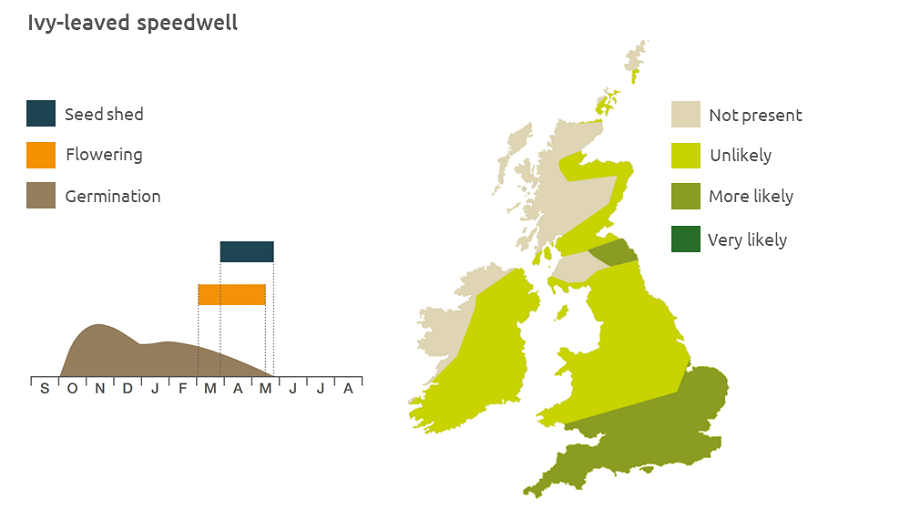- Home
- Knowledge library
- Distribution and biology of ivy-leaved speedwell in the UK
Distribution and biology of ivy-leaved speedwell in the UK
Ivy-leaved speedwell is a UK broad-leaved weed that is particularly competitive in winter oilseed rape. Find out how to identify and control it.
Overview
Ivy-leaved speedwell (Veronica hederifolia) reproduces by seed, which germinates in cold conditions in late autumn or early spring.
- It is particularly competitive in winter oilseed rape
Description
A creeping hairy branched annual with ivy-shaped five-pointed leaves. The flowers are small, lilac to white in colour and the fruit is three-dimensional, heart-shaped and hairy.
Key features
Young plant: The cotyledons end in a knob.
Fruit: The fruit has no lobes and is hairy.

Location and life cycle

Geographic distribution
Ivy-leaved speedwell is a lowland plant, growing up to an altitude of 380 m. It prefers open arable land, gardens and other bare or disturbed soils. It grows particularly in winter cereals, but is increasingly found in spring cereals in the west and north, as populations have been encouraged by winter cropping.
Soil type
It is found on warm, loose, nutrient-rich mild loam soils.
Seed statistics
- Seed longevity: >5 years
- Germination depth: 0.5 cm
- Seed weight: 3.91 mg
- Seeds/flower: 2
- Seeds/plant: 40–100
Management
For advice on herbicides, please speak with your agronomist or adviser.
When was this information last updated?
This page is based on content from the encyclopaedia of arable weeds publication. Since it was first released in 2008, the publication has been redesigned several times but not revised. However, it remains a good foundation for general information on the distribution and biology of weeds.

